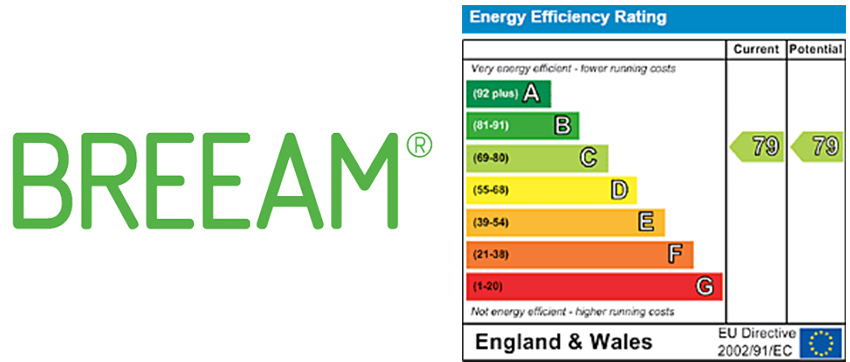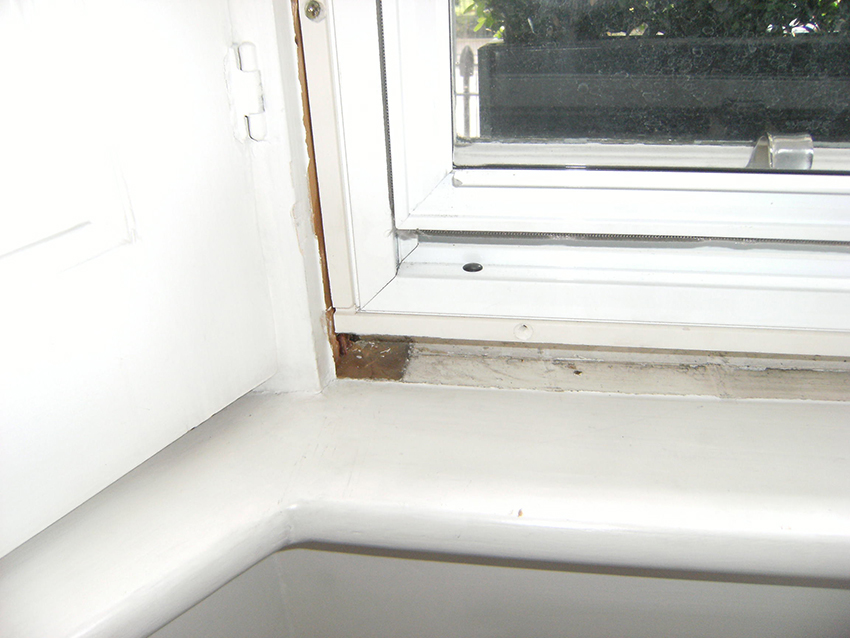(There is no evidence to substantiate any claims in this piece –it has been based on personal observations and opinions only)
Apart from the client, who has the dream to undertake a construction project, it could be said that the most important link in the chain is the specifier/specification team – architect, interior designer, engineering design team or a main contractor’s design team. This is the person or team of people who bring the concept to life, making an idea reality. After numerous years of training to qualify as a designer in the world of construction, these people have to take into consideration a huge range of factors which will affect the design and build of the project; relevant building regulations, materials and products to use, as well as ensuring they have all the necessary boxes ticked to pass relevant BREEAM and or EPC ratings and have health and safety covered. Essentially these people have to be superhuman!
 BREEAM & EPC
All of these points are generally covered off in a specification or bill of quantities, outlining which materials, products and systems should be used for all aspects of the build; from the bricks right through to the type of door handles.
Specifications used to be strong documents which were adhered to verbatim. If a manufacturer was specified – that was what was used with no substitutions. However, with manufacturing costs increasing, in part due to the rise in cost of imported goods – budgets are being exceeded and profit margins are being heavily squeezed. This has led to a rise in ‘value-engineering’, which can be seen as a necessity, as long as it doesn’t undermine the integrity of the specification of the whole building. Does this term alarm you? What is the ulterior motive and who is going to benefit from the money savings.
A project we recently worked on saw us having to strip out another secondary glazing system to replace with ours. The original benefit sought was noise insulation; however the product used, was probably chosen due to price and could not provide the acoustic reduction levels required. This adds time to the programme of the project as well as added costs. If a brand name is not provided and just a general product name in the specification with little details on what it must achieve performance wise, then is the cheapest option used, which may not be fit for purpose? Even when a brand is specified, if ‘value-engineering’ needs to be carried out to bring the project costs in line with the overall budget, then sometimes an alternative is used.
BREEAM & EPC
All of these points are generally covered off in a specification or bill of quantities, outlining which materials, products and systems should be used for all aspects of the build; from the bricks right through to the type of door handles.
Specifications used to be strong documents which were adhered to verbatim. If a manufacturer was specified – that was what was used with no substitutions. However, with manufacturing costs increasing, in part due to the rise in cost of imported goods – budgets are being exceeded and profit margins are being heavily squeezed. This has led to a rise in ‘value-engineering’, which can be seen as a necessity, as long as it doesn’t undermine the integrity of the specification of the whole building. Does this term alarm you? What is the ulterior motive and who is going to benefit from the money savings.
A project we recently worked on saw us having to strip out another secondary glazing system to replace with ours. The original benefit sought was noise insulation; however the product used, was probably chosen due to price and could not provide the acoustic reduction levels required. This adds time to the programme of the project as well as added costs. If a brand name is not provided and just a general product name in the specification with little details on what it must achieve performance wise, then is the cheapest option used, which may not be fit for purpose? Even when a brand is specified, if ‘value-engineering’ needs to be carried out to bring the project costs in line with the overall budget, then sometimes an alternative is used.
 Poor quality secondary glazing unit and installation
Over the last few years there has been devolution of responsibility to maintain and uphold building regulations such as the health and safety of a building as well as duty of care for the users/occupants. It has been spread amongst so many different organisations and areas, that it has become confusing and in some cases has led to nobody taking responsibility. This has been highlighted in the recent Grenfell Tower disaster.
Could this tragedy have been avoided by a strong definite specification led by a trained, qualified specifier, which was adhered too? Could the use of an inappropriate material have been avoided if so? Value engineering may keep costs down – but it can undermine the use and safety of a building or space. What is clear is that the cheaper option can be very costly in the long run.
Poor quality secondary glazing unit and installation
Over the last few years there has been devolution of responsibility to maintain and uphold building regulations such as the health and safety of a building as well as duty of care for the users/occupants. It has been spread amongst so many different organisations and areas, that it has become confusing and in some cases has led to nobody taking responsibility. This has been highlighted in the recent Grenfell Tower disaster.
Could this tragedy have been avoided by a strong definite specification led by a trained, qualified specifier, which was adhered too? Could the use of an inappropriate material have been avoided if so? Value engineering may keep costs down – but it can undermine the use and safety of a building or space. What is clear is that the cheaper option can be very costly in the long run.
 BREEAM & EPC
All of these points are generally covered off in a specification or bill of quantities, outlining which materials, products and systems should be used for all aspects of the build; from the bricks right through to the type of door handles.
Specifications used to be strong documents which were adhered to verbatim. If a manufacturer was specified – that was what was used with no substitutions. However, with manufacturing costs increasing, in part due to the rise in cost of imported goods – budgets are being exceeded and profit margins are being heavily squeezed. This has led to a rise in ‘value-engineering’, which can be seen as a necessity, as long as it doesn’t undermine the integrity of the specification of the whole building. Does this term alarm you? What is the ulterior motive and who is going to benefit from the money savings.
A project we recently worked on saw us having to strip out another secondary glazing system to replace with ours. The original benefit sought was noise insulation; however the product used, was probably chosen due to price and could not provide the acoustic reduction levels required. This adds time to the programme of the project as well as added costs. If a brand name is not provided and just a general product name in the specification with little details on what it must achieve performance wise, then is the cheapest option used, which may not be fit for purpose? Even when a brand is specified, if ‘value-engineering’ needs to be carried out to bring the project costs in line with the overall budget, then sometimes an alternative is used.
BREEAM & EPC
All of these points are generally covered off in a specification or bill of quantities, outlining which materials, products and systems should be used for all aspects of the build; from the bricks right through to the type of door handles.
Specifications used to be strong documents which were adhered to verbatim. If a manufacturer was specified – that was what was used with no substitutions. However, with manufacturing costs increasing, in part due to the rise in cost of imported goods – budgets are being exceeded and profit margins are being heavily squeezed. This has led to a rise in ‘value-engineering’, which can be seen as a necessity, as long as it doesn’t undermine the integrity of the specification of the whole building. Does this term alarm you? What is the ulterior motive and who is going to benefit from the money savings.
A project we recently worked on saw us having to strip out another secondary glazing system to replace with ours. The original benefit sought was noise insulation; however the product used, was probably chosen due to price and could not provide the acoustic reduction levels required. This adds time to the programme of the project as well as added costs. If a brand name is not provided and just a general product name in the specification with little details on what it must achieve performance wise, then is the cheapest option used, which may not be fit for purpose? Even when a brand is specified, if ‘value-engineering’ needs to be carried out to bring the project costs in line with the overall budget, then sometimes an alternative is used.
 Poor quality secondary glazing unit and installation
Over the last few years there has been devolution of responsibility to maintain and uphold building regulations such as the health and safety of a building as well as duty of care for the users/occupants. It has been spread amongst so many different organisations and areas, that it has become confusing and in some cases has led to nobody taking responsibility. This has been highlighted in the recent Grenfell Tower disaster.
Could this tragedy have been avoided by a strong definite specification led by a trained, qualified specifier, which was adhered too? Could the use of an inappropriate material have been avoided if so? Value engineering may keep costs down – but it can undermine the use and safety of a building or space. What is clear is that the cheaper option can be very costly in the long run.
Poor quality secondary glazing unit and installation
Over the last few years there has been devolution of responsibility to maintain and uphold building regulations such as the health and safety of a building as well as duty of care for the users/occupants. It has been spread amongst so many different organisations and areas, that it has become confusing and in some cases has led to nobody taking responsibility. This has been highlighted in the recent Grenfell Tower disaster.
Could this tragedy have been avoided by a strong definite specification led by a trained, qualified specifier, which was adhered too? Could the use of an inappropriate material have been avoided if so? Value engineering may keep costs down – but it can undermine the use and safety of a building or space. What is clear is that the cheaper option can be very costly in the long run.- Date
- Category
- The Built Environment